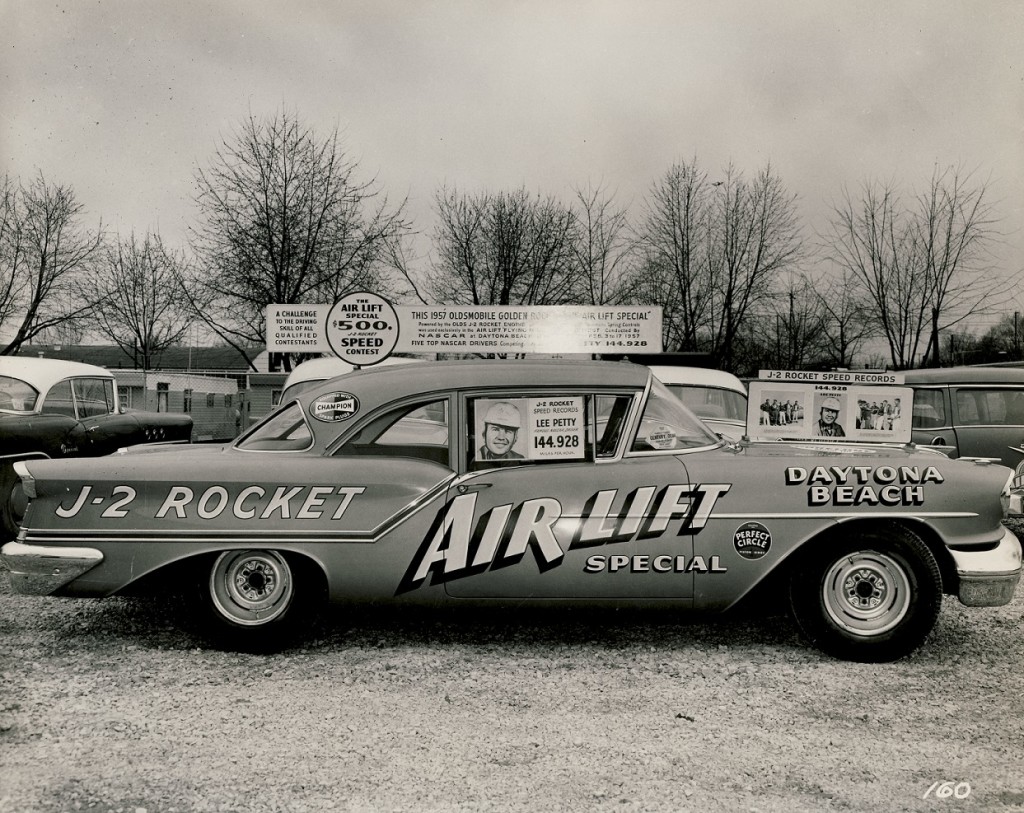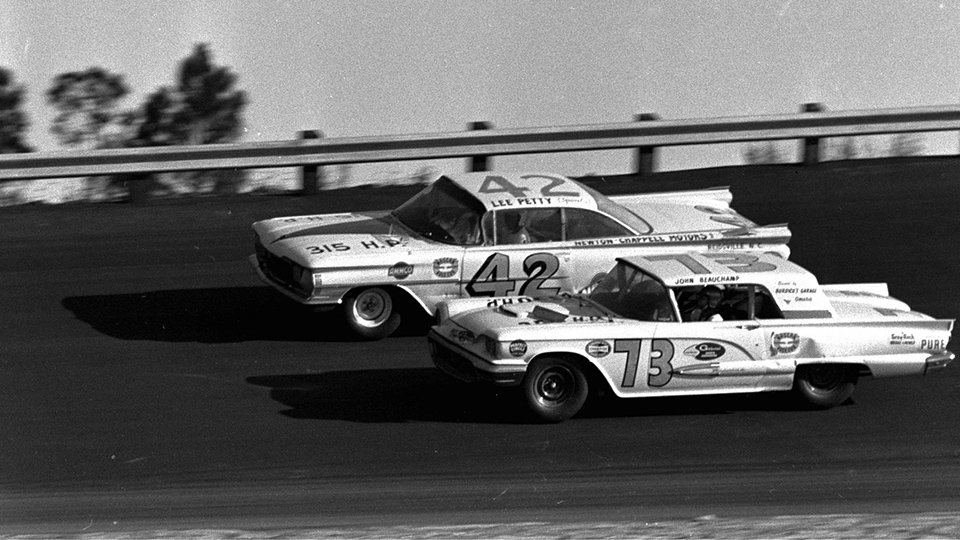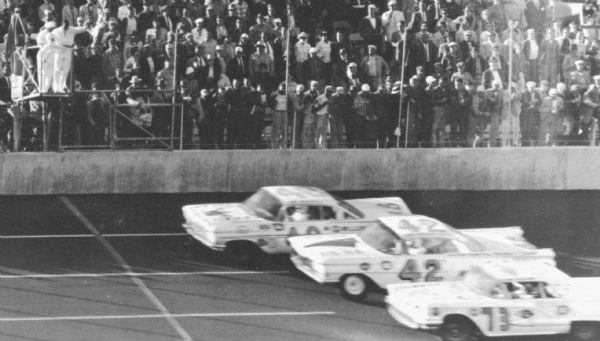

In 1949, Air Lift Co. founders Claude Pemberton and Don Perkins developed an air-assisted automobile suspension that would help support overloaded vehicles and improve ride quality and safety. Pemberton was a General Electric engineer and Perkins would later be known for his help in developing the front-wheel drive Oldsmobile Toronado. Both men were successful innovators and Air Lift now employs 130 people and makes suspension parts that fit 543 cars and trucks.
However, the concept of an air suspension wasn’t immediately accepted in the early postwar years and Air Lift turned to the world of stock car racing to prove that its system really worked.
In that era there were no super speedways and land speed racing at the Bonneville Salt Flats was in its infancy. The birthplace of early speed trials and stock car racing was on the sandy beaches of Florida and Daytona Beach ultimately became Mecca for the stock car racing fraternity. The Daytona Beach Road Course was the home of Speed Week and the place where records were set each year. Drivers from Alexander Winton to R.E. Olds proved their ideas there.

Daytona was a tricky course at that time. The two-mile-long stretch of sandy beach suddenly changed to paved asphalt where it met the A1A Highway after a number of hairpin turns. Many racing cars had trouble maintaining traction and more than a few flipped on their sides or roofs as their nearly-stock 1950s suspensions were not really up to the level of racing car handling.
Air Lift company realized that its air suspension could help keep the 2-ton cars on track as they raced over the tricky course. Lee Petty – the father of legendary driver Richard Petty – piloted the Air Lift Special ’57 Oldsmobile that set a speed record of over 144 mph. Though his son would later drive Plymouths to fame, Lee Petty raced Oldsmobiles for a number of years and won with them.

In 1959, the first Daytona 500 was held on Feb. 22. Lee Petty won it with an Oldsmobile 88, but he was not declared the winner. At the end of the race, there was a neck-and-neck finish with Petty’s Olds, Johnny Beauchamp’s Thunderbird, and Joe Weatherly’s Chevy all seeming to be in contention.
Beauchamp was declared the winner and actually went into victory lane, but Petty filed a protest. It took NASCAR founder Bill France, Sr. three days to decide which driver won. There was even speculation that France created the controversy on purpose to generate added publicity for his organization. In the end, with the help of national newsreels, Petty was named the official winner. But, of course, the real winner was Air Lift, which had proven its product.


Leave a Reply